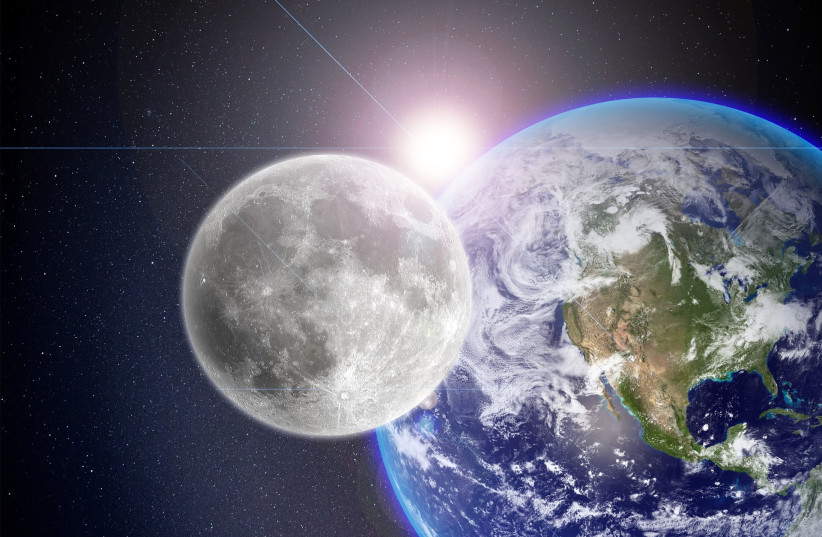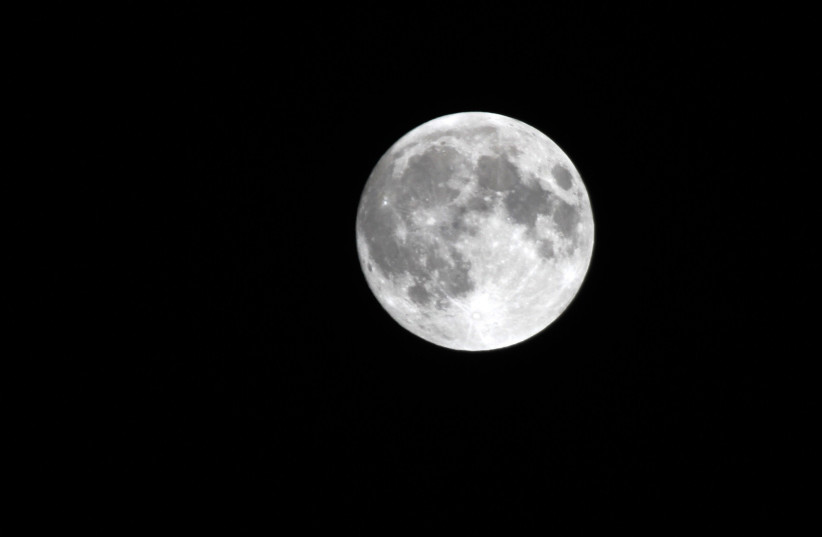Earth has a number of qualities that differentiate it from other planets, including the size of the Moon in respect to the planet. This has a profound impact on Earth's ability to support life. But is a large moon needed to make a planet able to host life?
That may be the case, and according to a new study, published in the peer-reviewed academic journal Nature Communications, large moons that allow planets to be home to life might only be able to form around smaller planets, like Earth.
So how does this work?
To understand that, we first need to talk about what is a moon, how is it formed and how does it help biological life thrive.

What is a moon?
A moon is, in essence, a type of natural satellite that orbits around another object in space, whether that be a planet, dwarf planet or something else.
Not all natural satellites are considered moons, though there is no real set limit on what would constitute a moon.
There are many of these satellites in our solar system, orbiting around anything from asteroids to dwarf planets to planets. But complications aside, what is most relevant here are planetary satellites, which are what we most commonly consider moons.
<br>Where did the moon come from?
While there is some debate, the most widely accepted theory is that it was formed after the Earth was struck by a massive Mars-sized object in space (having been named "Theia" by many scientists) in what is known as the giant-impact hypothesis.
This impact resulted in the creation of a partially vaporized disk. Eventually, the matter in this disk would gather together through the process of accretion to form into what they are now.
There are some exceptions to this, though. For instance, Triton, one of Neptune's moons, may not be a moon as we understand it, and is theorized to actually be a dwarf planet that became caught in Neptune's orbit.
Also, not everyone agrees that this is how the Moon formed, with a number of other theories having been put forward.
Moons are prevalent throughout the solar system, with most planets having several. This includes Mars, which has two; Jupiter, which has 80 known moons; Saturn, which has 83 as far as we know; Neptune, which has at least 17; Uranus, which has at least 27; and Pluto, if one considers it a planet, has five.
<br>How does the Moon impact life on Earth?
A number of variables are present on Earth, the only planet home to life as far as we know, that differentiate it from other planets. This includes plate tectonics, a strong magnetic field and, most relevant of all for this explanation, a large moon.
The Moon's gravity has a notable effect on the Earth's tides, as well as the length of the day. Further, it also stabilizes the Earth's spin on its axis. In other words, it helps maintain Earth's climate. And a stable climate may be just what is needed to make a planet able to host life that can grow and evolve.
<br>So is a moon, like our moon, necessary for life to grow?
Possibly. Take into account, for example, Mars and Venus, Earth's two closest neighbors in the solar system.
Mars is often thought of in popular consciousness as the most likely home for alien life, but the fact is there has been zero evidence thus far indicating anything remotely of the sort.
While Mars does have two moons, they are very small, with diameters of 22.2 kilometers and 12.6 kilometers respectively.
For comparison, Earth's moon is much larger, about 25% the diameter of Earth and comparable in width to Australia.
Venus is a planet widely considered to be very similar to Earth and has even been referred to by NASA as Earth's twin. However, the planet is absolutely inhospitable, barring some theories about what might exist in its atmosphere, and this planet has no natural satellites whatsoever.
One should also take into account the size of the Moon with respect to Earth. Aside from its considerable diameter, it also has a mass of 1/81 of Earth's. No other moon in the solar system has such a large size compared to its planet, not counting Pluto and its moon Charon.
However, the Moon is not the largest moon in the solar system - that distinction goes to Jupiter's moon Ganymede.

So how does this size ratio factor into the Moon being so vital to life, and only being able to be found around smaller planets?
That goes back to the disks.
The scientists behind the study used computer impact simulations to calculate what would result from different impact scenarios, whether it be from icy worlds or Earth-like rocky planets. Would it result in a partially vaporized disk that would result in forming large moons?
As the study indicated, size certainly matters in this regard.
When a rocky planet is over six times larger than Earth's mass or when icy planets have a mass larger than the Earth's, the impacts didn't result in partially vaporized disks. Rather, they resulted in fully vaporized disks, which can't form large moons.
<br>So what does this mean?
The implications of this discovery could help lead to further developments in the search for worlds capable of hosting life.
Despite how common moons are in our solar system, that does not seem to necessarily be the case outside of it.
There have so far been around 5,000 definitively identified exoplanets (planets existing outside the solar system). However, no exoplanet has ever been found with a moon (which would be known as an exomoon).
Currently, there are only a few possible candidates that might possibly be genuine exomoons. This includes Kepler-1625 b-i, first discovered in 2018, and Kepler-1708 b-i, a recently identified possible exomoon that would be 2.6 times bigger than Earth. However, their existences have yet to be confirmed.
But it is far from impossible that exomoons could exist. Indeed, exomoons in general are very hard to find in general, as are exoplanets, given that scientists have to rely on the dimming of stars when these objects orbit them to spot them.
But another issue may have also been hindering efforts: Size.
As pointed out by the study's lead author, Miki Nakajima of the University of Rochester, “The exoplanet search has typically been focused on planets larger than six earth masses. We are proposing that instead we should look at smaller planets because they are probably better candidates to host fractionally large moons.”
